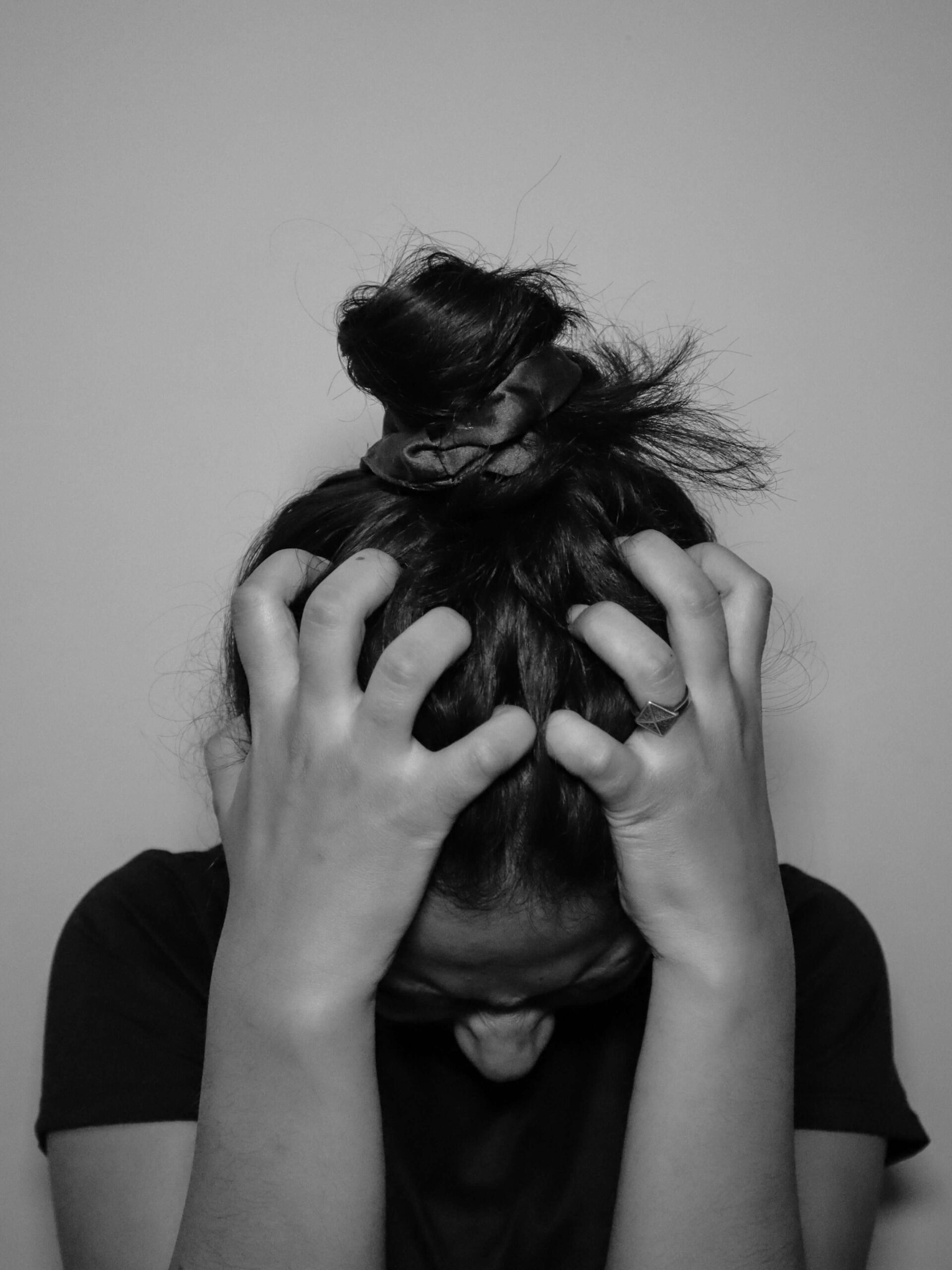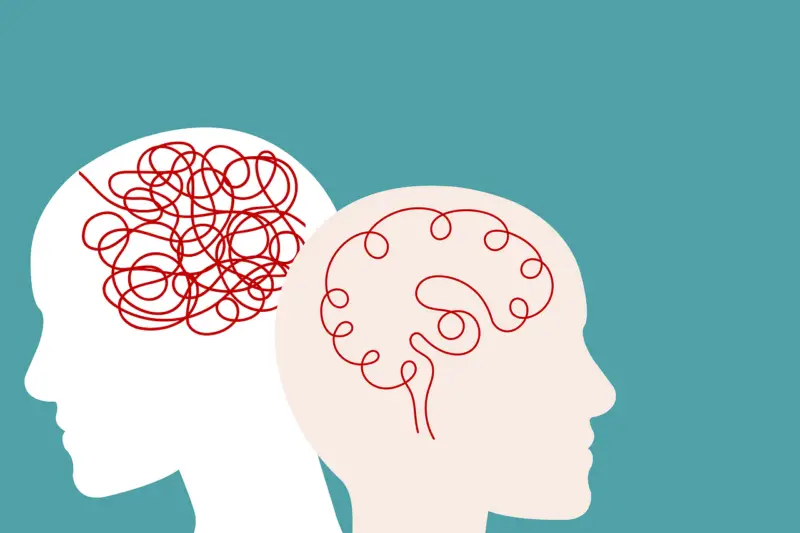Ever wondered about the fine line between bipolar disorder and borderline personality disorder (BPD)? These two mental health issues often look similar, causing confusion and wrong diagnoses. But knowing the differences is key to getting the right help.
In this article, we’ll dive into bipolar disorder and BPD. We’ll look at their unique traits, symptoms, and how to treat them. By the end, you’ll know how these conditions differ and how to spot their signs.
Key Takeaways
- Bipolar disorder and borderline personality disorder (BPD) are distinct mental health conditions with different symptoms and causes.
- Bipolar disorder is marked by mood swings between manic and depressive episodes. BPD is known for intense and reactive emotions.
- Treatment for bipolar disorder focuses more on medication, while therapy is key for BPD.
- Getting the right diagnosis is vital. Misdiagnosis can lead to ineffective treatment and more suffering.
- Knowing the differences helps people find the right support and resources they need.
So, what makes these two conditions unique? How can you tell the signs and symptoms of each? Let’s uncover the truth behind these complex mental health issues.
Introduction to Bipolar Disorder and BPD
Bipolar disorder and borderline personality disorder (BPD) are complex mental health issues. They both affect a person’s life deeply. Yet, knowing the differences between them is key for correct diagnosis and treatment.
Bipolar disorder is a mood disorder with extreme mood swings. People with this disorder go through episodes of mania and depression. Mania brings feelings of joy, lots of energy, and impulsive actions. Depression, on the other hand, brings sadness, tiredness, and a lack of interest in things.
Borderline personality disorder (BPD) is a personality disorder with instability in relationships, self-image, and emotions. Those with BPD have intense emotions that change quickly. This can lead to impulsive and sometimes harmful behavior.
| Characteristic | Bipolar Disorder | Borderline Personality Disorder (BPD) |
|---|---|---|
| Mood Swings | Cyclical, between mania and depression | Intense and reactive, often triggered by interpersonal events |
| Emotional Regulation | Difficulty regulating emotions during mood episodes | Chronic emotional dysregulation, leading to impulsive behavior |
| Interpersonal Relationships | Relationships may be impacted during mood episodes | Unstable and intense relationships, with fear of abandonment |
| Self-Image | Self-image may be affected during mood episodes | Unstable and distorted self-image |
Even though bipolar disorder and BPD share some symptoms, they are different in many ways. Knowing these differences is vital for doctors to give the right treatment. This helps those struggling with these conditions get better.

Defining Bipolar Disorder
Bipolar disorder is a complex mental health condition. It is marked by big mood swings, changes in energy, and activity levels. This mood disorder includes manic and depressive episodes, affecting daily life and functioning.
Types of Bipolar Disorder
There are several types of bipolar disorder, each with its own features and mood patterns:
- Bipolar I Disorder: This is the most severe form. It includes full-blown manic episodes lasting days or weeks, often followed by depressive episodes.
- Bipolar II Disorder: People with Bipolar II have hypomanic episodes, which are less severe than manic episodes. They also experience depressive episodes.
- Cyclothymic Disorder: This is a milder form. It involves alternating periods of hypomania and mild depression lasting years.
Symptoms of Bipolar Disorder
The main symptoms of bipolar disorder are mood, energy, and activity level changes. During manic episodes, people may feel very energetic, restless, and euphoric. They might also act impulsively.
In contrast, depressive episodes bring sadness, hopelessness, and low energy. It’s important to recognize these bipolar disorder symptoms, like mood swings, for accurate diagnosis and treatment.
Defining Borderline Personality Disorder (BPD)

Borderline personality disorder (BPD) is a complex mental health issue. It involves unstable relationships, self-image, and emotions. Unlike bipolar disorder, BPD has distinct features that make it unique.
Core Features of BPD
People with BPD often have intense mood swings and fear of being left. They also act on impulse, which can harm their daily life and relationships.
- Intense and reactive mood swings: Those with BPD can quickly change their emotions. They might go from happiness to despair or anger fast.
- Fear of abandonment: They fear being left or rejected. This can make them clingy or desperate in relationships.
- Impulsive behaviors: BPD individuals might do things on impulse, like spending recklessly or harming themselves. These actions can have bad outcomes.
The core features of BPD make it hard for people to keep stable relationships and manage their feelings. Knowing what BPD is helps in treating and supporting them.
Key Differences Between Bipolar and BPD
Bipolar disorder and borderline personality disorder share some traits, like mood swings. But, they have key differences. These differences include the causes, mood episode length, and symptoms.
Bipolar disorder is a mood disorder with mood, energy, and activity level changes. People with bipolar disorder go through depression and mania or hypomania. On the other hand, BPD is a personality disorder with instability in relationships, self-image, and emotions.
| Bipolar Disorder | Borderline Personality Disorder (BPD) |
|---|---|
| Mood episodes are typically more prolonged, lasting days or weeks. | Mood changes are often more rapid and intense, lasting hours or a few days. |
| Mood episodes are experienced as distinct from one’s normal state. | Mood changes are more reactive and closely tied to interpersonal events. |
| Individuals often experience periods of normal mood between episodes. | Mood instability is more pervasive and less predictable. |
Understanding the differences between bipolar disorder and BPD is vital. It affects diagnosis, treatment, and prognosis. Knowing these differences helps healthcare professionals and those seeking help manage their conditions better.
Mood Swings: Cyclical vs Intense and Reactive
One key difference between bipolar disorder and borderline personality disorder (BPD) is their mood swings. Bipolar disorder has distinct, cyclical mood episodes. These include periods of mania and depression. BPD, however, is marked by intense mood swings that can be triggered by stress or interactions with others.
Bipolar disorder’s mood swings follow a predictable pattern. There are clear periods of high mood (mania) and low mood (depression). These episodes can last for days or weeks. During these times, the person’s energy, sleep, and decision-making abilities can change a lot.
People with BPD experience mood swings that can change quickly. These swings can be triggered by small events or interactions. Their emotional state can shift rapidly, like going from happiness to anger or fear.
It’s important to understand the differences in mood swings between bipolar disorder and BPD. This helps in making accurate diagnoses and effective treatments. By recognizing these patterns, healthcare professionals can tailor their approach to meet the unique needs of those struggling with these conditions.
Emotional Regulation and Stability
At the heart of the differences between bipolar disorder and borderline personality disorder (BPD) lies the concept of emotional regulation. People with bipolar disorder often have periods of calm between mood episodes. On the other hand, those with BPD face constant emotional struggles.
Emotional Dysregulation in BPD
Those with BPD find it hard to control their emotions. They swing from extreme highs to deep lows quickly. This can cause impulsive actions, trouble in relationships, and a lot of inner turmoil.
People with bipolar disorder, however, experience emotions in cycles. They go through mania or depression, but these episodes are more distinct. They are also separated by periods of calm.
- Individuals with BPD often feel overwhelmed by their emotions.
- They might turn to self-harm or risky behaviors to cope with their feelings.
- The emotional struggles in BPD deeply affect many areas of life.
It’s key to understand the emotional differences between bipolar disorder and BPD for accurate diagnosis and treatment. By tackling the emotional challenges, healthcare professionals can offer better support. This can greatly improve the well-being of those dealing with these complex mental health issues.
Difference Between Bipolar and BPD: Treatment Approaches
Treatment for bipolar disorder and borderline personality disorder (BPD) is different. Bipolar disorder often involves medication. But for BPD, therapy is key.
Therapy for Bipolar Disorder
People with bipolar disorder get help from medication and therapy. Psychotherapy, like cognitive-behavioral therapy (CBT), helps manage mood swings. Family therapy also helps by supporting loved ones.
Therapy for BPD
- Dialectical Behavior Therapy (DBT): This is the top therapy for BPD. It teaches skills for emotional control and better relationships.
- Mentalization-Based Therapy (MBT): This therapy helps understand mental states. It improves emotional control and relationships.
- Schema Therapy: It works on the deep beliefs that cause BPD. It helps develop healthier ways to cope and build better relationships.
Medication is more common for bipolar disorder. But for BPD, therapy, especially DBT, is the main focus. This helps tailor treatment to each patient’s needs, leading to better recovery.
Diagnosis Criteria: How Are They Differentiated?
Getting a correct diagnosis for bipolar disorder and BPD is crucial. Mental health experts use the Diagnostic and Statistical Manual of Mental Disorders (DSM). This guide helps them tell these conditions apart and plan the right treatment.
When diagnosing bipolar disorder, they look for patterns of manic and depressive episodes. They check how long these episodes last and how they affect daily life. On the other hand, diagnosing BPD involves checking for emotional instability, impulsivity, and problems in relationships.
Experts carefully look at symptoms, how long they last, and their impact on life. This helps them accurately diagnose bipolar disorder or BPD. It ensures the right treatment plan is put in place.
FAQ
What is the difference between bipolar disorder and borderline personality disorder (BPD)?
What are the main symptoms of bipolar disorder and BPD?
How are the mood swings different in bipolar disorder and BPD?
What are the treatment approaches for bipolar disorder and BPD?
How are bipolar disorder and BPD diagnosed?
Image Credits
Featured Image By – Rosy / Bad Homburg / Germany from Pixabay
Image 1 By – Simran Sood on Unsplash
Image 2 By – freepik







